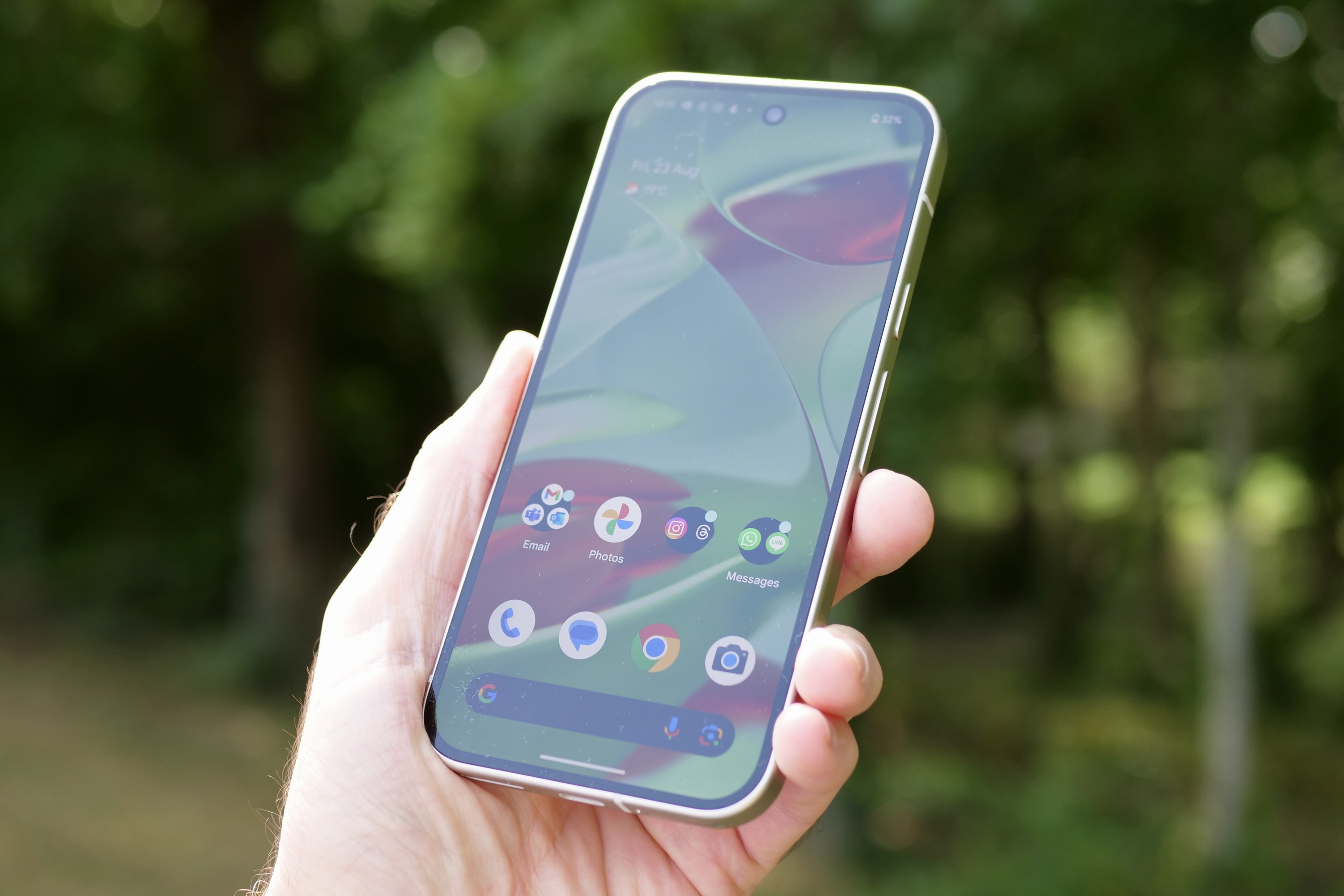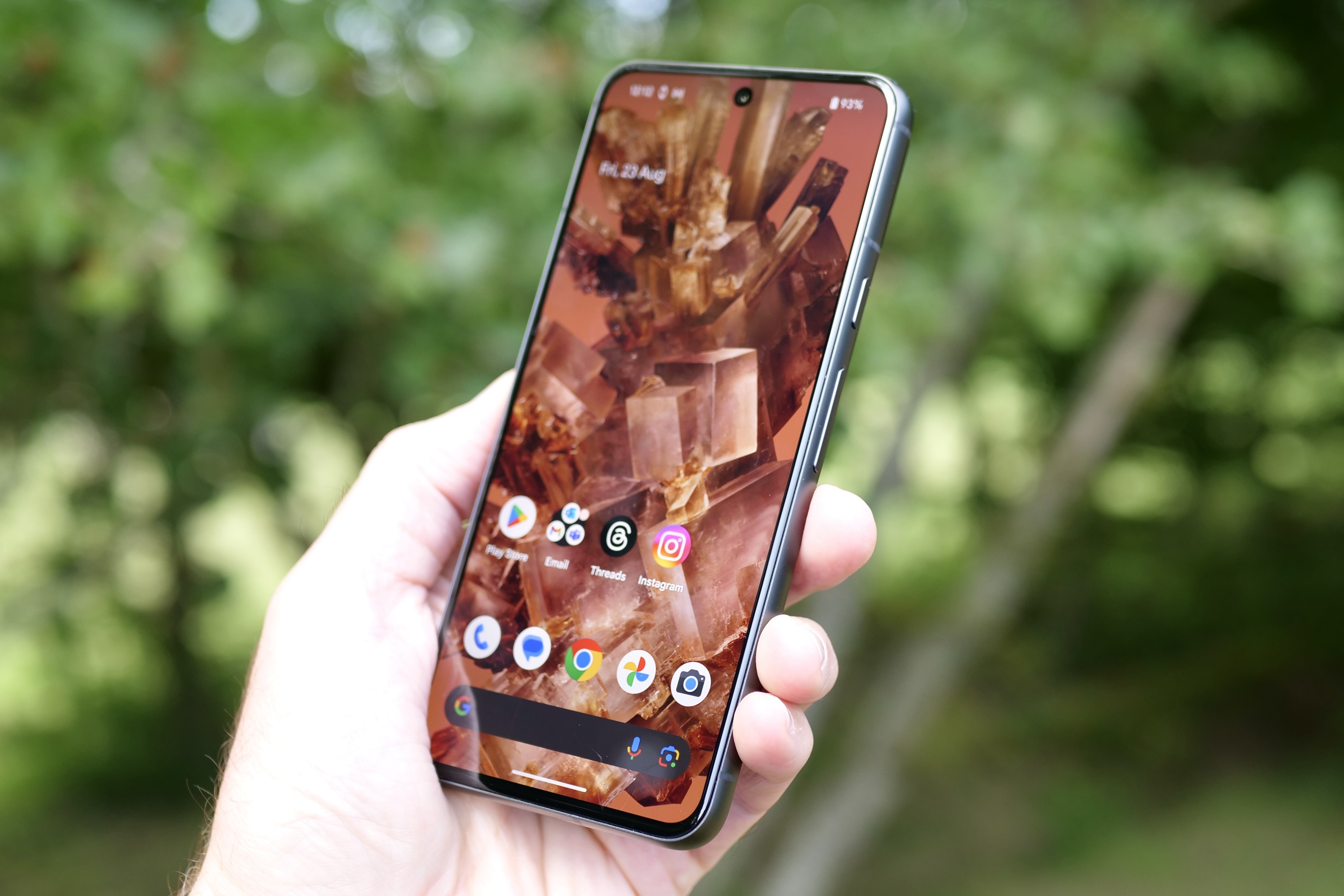If you own a Google Pixel 8, you’re probably pretty pleased with the camera and the photos it takes — but you’re also probably eyeing up the Google Pixel 9 with its cool new design and flashy AI features.
What about the camera? After all, they aren’t all that different on paper, so will it be worth upgrading if you take a lot of photos? I’ve taken over 100 pictures with both phones to see whether it’s worth changing.
Camera specs

Both the Pixel 8 and Pixel 9 share the same 50-megapixel primary camera with an f/1.68 aperture, but there has been a change with the ultrawide camera. The Pixel 9 has a 48MP auto-focus sensor with a 123-degree field of view, while the Pixel 8 has a 12MP ultrawide sensor with a 125-degree field of view. The aperture has changed, too, with the Pixel 9’s f/1.7 aperture improving over the Pixel 8’s f/2.2 aperture.
Neither have a telephoto camera, but the Pixel 9 promises to provide “optical quality” photos at 2x zoom, and both have Google’s 8x Super Res Zoom feature. Beyond this, while the Pixel 8 and Pixel 9 use Android 14, the Pixel 9 has the latest Tensor G4 processor instead of the Tensor G3 used in the

Google has not specifically stated that AI enhances the main camera’s photos, but the Pixel 9 does have various AI image tools, such as the Reimagine mode in Google Photos and the Pixel Studio AI image generation app. All the photos below were taken in auto mode and have not been edited, but they have all been resized for easier online viewing after being examined on a monitor.
Main camera
- 1. Google Pixel 9
- 2. Google Pixel 8
Unsurprisingly, it’s very hard to spot any differences between the main cameras, even with the two phones using different processors. I’m used to testing phones where there are only minimal differences in the photos, but this time, I’m not sure there are any differences at all, no matter how closely I stare.
Let’s start with the photo of a dog. The details, white balance, colors, and depth of field are all nearly identical, with only minuscule variations when you look closely, but none make one photo better than the other. Neither photo has its own character; instead, it shares a character. None of this is a bad thing, as both photos look great.
- 1. Google Pixel 9
- 2. Google Pixel 8
The second photo of the vegetable stand shows remarkably similar colors, subtle differences in black levels, and the same hazy sky and background treatment. One photo is not better than the other; they are both essentially the same, even with the tiny differences I can spot in the black levels.
- 1. Google Pixel 9
- 2. Google Pixel 8
The beach scene does show where the Pixel 9 can improve, though. In some photos, the Pixel 8’s sky tends to show a slightly deeper blue than the Pixel 9’s, and in this case, the Pixel 9 also sharpened the entire photo more effectively than the Pixel 8. But to spot these changes, you do have to view the photos alongside each other.
- 1. Google Pixel 9
- 2. Google Pixel 8
In the final photo, the Pixel 8’s deeper color treatment can be seen on the oil barrel, and when you crop the photo right down, the Pixel 9 shows a tiny bit more detail, such as in the writing on the staircase. However, I don’t think anyone will genuinely notice or care about these differences, as most of the time, the photos look identical to each other.
Winner: Draw
Wide-angle camera
- 1. Google Pixel 9 wide-angle
- 2. Google Pixel 8 wide-angle
If the two phones in the main camera category were impossible to split, things get easier in the wide-angle category. The Pixel 9’s wide-angle camera can take better photos than the Pixel 8, as seen in the first example of the vineyard. The grass in the foreground and the vines growing in the center of the shot are much sharper, while the leaves at the top of the frame have less blur, too.
- 1. Google Pixel 9 wide-angle
- 2. Google Pixel 8 wide-angle
However, don’t expect the Pixel 9 to always take a superior wide-angle photo. The wide-angle beach scene again shows the difference in the sky’s color from the Pixel 8, but otherwise, detail and sharpness are very close between them, and I don’t think it’s fair to call one better than the other.
- 1. Google Pixel 9 wide-angle
- 2. Google Pixel 8 wide-angle
In the final photo of the church, there’s some slight change in detail when you look closely at the tower; plus, the Pixel 9 does have a marginally more vibrant tone, but otherwise, it’s hard to say it took a vastly better photo than the Pixel 8. The Pixel 9 is going to win this category simply because it does sometimes take a higher-quality photo, but it’s by no means a decisive victory.
Winner: Google Pixel 9
2x and 8x zoom
- 1. Google Pixel 9 2x zoom
- 2. Google Pixel 8 2x zoom
Neither phone has an optical zoom or dedicated telephoto camera, so the 2x shortcut in the app digitally zooms into the shot. Unsurprisingly, the pair show very little difference in photo quality. Both 2x zoom shots of the tomatoes have bright colors and a lovely depth of field, plus plenty of detail on the boxes and text, too.
- 1. Google Pixel 9 2x zoom
- 2. Google Pixel 8 2x zoom
The 2x shot of the alloy wheel shows how little the cameras differ. They produce what I think is the same photo, with similar black levels (slightly deeper on the Pixel 8, just like its blues), detail, and depth of field. I can’t split them enough to say one is better, but I think the 2x performance on both cameras is perfectly usable in most situations.
- 1. Google Pixel 9 8x Super Res Zoom
- 2. Google Pixel 8 8x Super Res Zoom
When you switch to the 8x Super Res Zoom, the Pixel 9 does improve on the Pixel 8, with less noise, sharper edges, and less aggressive edge enhancement. It does perform better than the
Winner: Draw
Portrait mode and Action Pan
- 1. Google Pixel 9 Portrait mode
- 2. Google Pixel 8 Portrait mode
I was expecting a few more differences between the Portrait and Action Pan modes, driven mainly by the difference in the processor and Google’s AI push in photo editing. However, when it comes to depth of field and edge recognition, the two cameras are extremely similar. Even so, there are some differences in color treatment.
- 1. Google Pixel 9 Portrait mode
- 2. Google Pixel 8 Portrait mode
The two Portrait photos above show similar situations, but subtle differences between the colors in both. The Pixel 8 is more punchy, while the Pixel 9 has a more natural tone that can appear slightly flat. Again, these are very small changes between the two, and just like other categories, neither is dramatically better than the other photo. I’d be pleased with either image.
- 1. Google Pixel 9 Action Pan
- 2. Google Pixel 8 Action Pan
Action Pan (which adds motion blur to shots of moving objects) remains quite effective, and it’s incredibly easy to use, too. I did spot some differences in sharpness with the Pixel 9, but they were inconsistent, suggesting it may have more to do with the way I was taking the photo than the camera or mode itself. Both cameras make good use of the Action Pan mode, just like the Portrait mode, and they’re fun to use.
Winner: Draw
Night mode
- 1. Google Pixel 9 Night mode
- 2. Google Pixel 8 Night mode
The Pixel 9 can take brighter photos in very low light compared to the Pixel 8, but in most other situations, the two cameras have few differences. So, to emphasize this and not repeat myself yet again, here are a couple of examples showing the Pixel 9’s impressive lowlight ability. In the first photo of the wooden roof at night, the Pixel 9 brings out more detail in the shadows, especially in the pitch-dark top left.
- 1. Google Pixel 9 Night mode
- 2. Google Pixel 8 Night mode
I don’t think it makes the Pixel 9’s photo better, just brighter, but the second photo taken in very low light is better. There’s a lot less blur in the Pixel 9’s photo, resulting in a steadier and sharper photo. You can see the difference throughout the image, from the wooden door to the stack of roof tiles. In very low light, the Pixel 9 takes sharper photos than the Pixel 8, but at other times, the two are comparable.
Winner: Google Pixel 9
The Pixel 9 wins, but only just
The Google Pixel 9 has taken wins with the wide-angle camera and in the Night mode test, but the other categories are all draws, with minimal differences between the photos, if any. It means two things. The first is that the Pixel 9’s camera is barely any different from the Pixel 8’s, and the second is that the Pixel 8 still has a brilliant camera. I should note that I haven’t been disappointed by any of the photos taken with the two cameras.
Surprisingly, the Pixel 9’s technical differences and greater emphasis on AI didn’t result in more dramatic differences. Even modes like Action Pan delivered similar results. The Pixel 9 is the winner of our test, and the camera is very good, but there’s no reason to upgrade from the Pixel 8 to get a slightly improved wide-angle camera. Perhaps the biggest takeaway is if you see a good deal on the Pixel 8, it’s probably worth snapping it up over the Pixel 9, given its increased price this year.



































